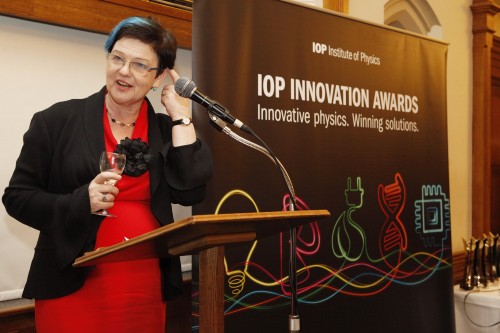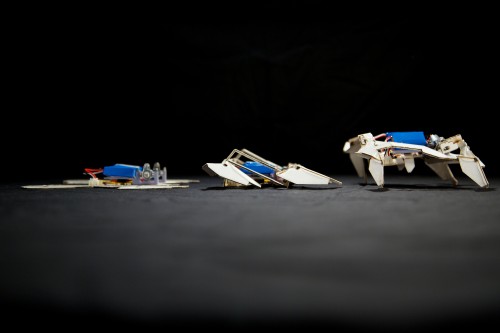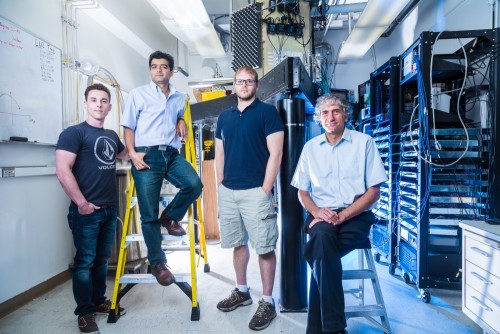Tag archives: commercialization
Google’s ‘supreme’ 20-qubit quantum computer
By Tushna Commissariat in New Orleans, Louisiana, US
“We should have a 20-qubit chip ready very soon… in the next two months most likely,” says Google’s John Martinis to me as we lean against a wall in a relatively quiet corner of the sprawling convention centre in New Orleans. Martinis, a tall man with a mop of silver hair and an Alan Alda-esque manner, is very busy and I’m lucky to have caught him. Earlier that day, he gave one of the APS March Meeting‘s most popular talks on “quantum supremacy: checking a quantum computer with a classical supercomputer”. Martinis, whose team is based at the University of California Santa Barbara, spoke about how they are working towards developing a “scientifically and commercially useful quantum computer” made up of 50 qubits – a 7 by 7 array of superconducting qubits (each of which is coupled to its nearest neighbour) that can be programmed with a one or two-qubit gate – which has an error rate of about 0.1% and can actually do quantum computations.
View all posts by this author | View this author's profile
Celebrating innovation

Clever thinking: Baroness Neville-Rolfe celebrates the winners of the 2014 Institute of Physics innovation awards. (Courtesy: Richard Lewis)
By Matin Durrani
“Commercializing physics” is the theme of the November issue of Physics World and it was therefore timely that last night saw a special ceremony at the House of Commons to celebrate the winners of this year’s Innovation Awards from the Institute of Physics (IOP), which publishes the magazine.
The awards, which are now in their third year, are given by the Institute to firms in the UK and Ireland “that have built success on the innovative application of physics”.
Four firms were honoured this year: Gas Sensing Solutions, which makes carbon-dioxide sensors; Gooch & Housego, for an opto-acoustic device that can modulate laser beams for industrial processing; nuclear-power firm Magnox for a clever way of refuelling a reactor at the Wylfa power station; and MBDA for a novel “missile-system upgrade”.
View all posts by this author | View this author's profile
Rise of the real transformers, a celestial farewell for your furry friend and more

Ready, steady, go: a profile view of the “transformer” robot. (Courtesy: Seth Kroll, Wyss Institute)
By Tushna Commissariat and Michael Banks
While the latest Transformers film hit cinemas in the UK earlier this month, scientists in the US at Harvard University, along with colleagues at the Massachusetts Institute of Technology, have developed the very first “real life” transformer: a robot that starts out flat, folds and assembles itself into a complex shape and can then crawl away – all without any human intervention. Indeed, these printed robots can self-fold themselves in about four minutes – a huge improvement on previous models that could take up to two hours. They can even turn and naviagte around, making them a handy and practical tool.
Physics World tackles the valley of death
By James Dacey
Many academics believe that they have an idea in them that could lead to a nifty new technology – and make them some cash in the process. But there is a world of difference between discussing an idea in the departmental common room and actually launching a new product to fit into an unexploited niche in the market. One of the biggest challenges that start-up companies face is known as the valley of death, which we have illustrated for you here with this quirky animation.
The voice you hear is that of Stan Reiss, who works for the international venture capitalist firm Matrix Partners. He explains how the valley of death is a metaphor for the financial challenges faced by a spin-off company in the early stages of its development. In this phase, the firm may have a prototype for a product but it might not have the income or the capital to comfortably survive and grow. Often, the company simply runs out of money and falls by the wayside. “There’s a lot of dead bones and skeletons at the end of that valley,” says Reiss.
